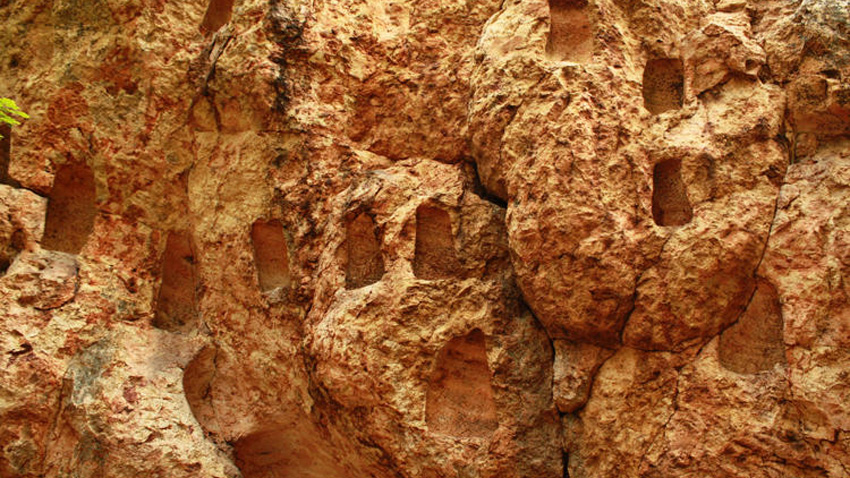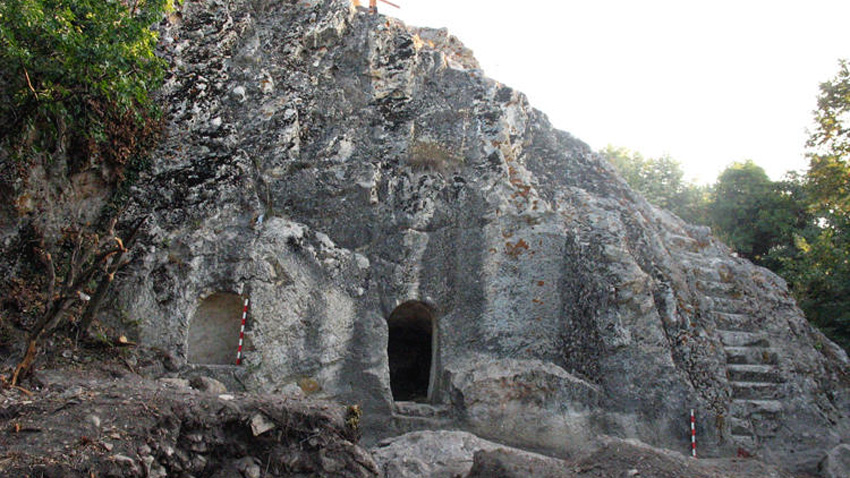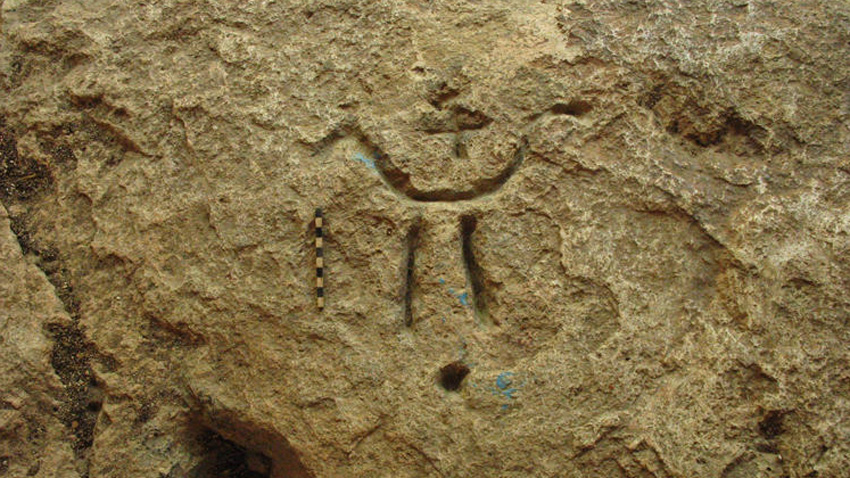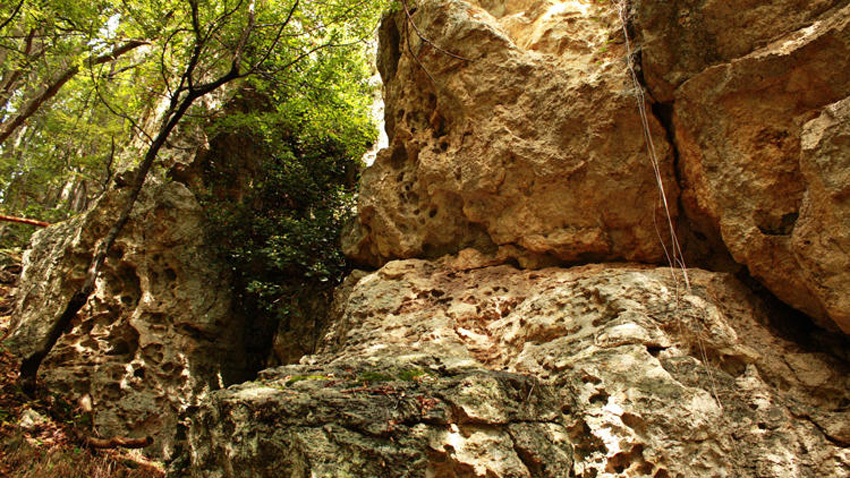The impressive ancient complex of Gluhite Kamani /Deaf Stones/ next to the Malko Gradishte village, Lyubimets Municipality in the Northeast Rhodope Mountain was first discovered by Czech brothers Hermann and Karel Škorpil in the early 20th century. The brothers were the founders of scientific archaeology in Bulgaria. However, the revealing of the sites’ secrets began no earlier than 2008, says Associate Prof. Georgi Nehrizov, a long-year researcher of the complex.
“The site is huge, spreading over 1 km2 and including the Sveta Marina Peak where the medieval Efrem fortress was supposedly situated. There is a bunch of rocks on the eastern slope of the peak, known by the name Deaf Stones,” Associate Prof. Nehrizov says.
 More from him on the area’s name:
More from him on the area’s name:
“We have always been impressed by the lack of audibility there – the rocks simply absorb the noise, there is no echo as well. We have had several experiments this year together with experts from the Institute of Mechanics of Acoustics and they confirmed our observations. Even a gunshot there fades at 50 – 60 m. We expect to find out why.”
 The complex is astonishing with its numerous rock niches:
The complex is astonishing with its numerous rock niches:
“These are monuments, spread mainly across the East Rhodope along the Arda riverbank and related to the culture of Thracian people. That was confirmed by archaeological excavations. However, we reached a layer from the end of the 5th and the beginning of the 4th millennium BC. These are the earliest traces of human presence there. We are not sure what the place was functioning like back then, as few artifacts have been discovered, mainly ceramics and primitive stone tools. The Bronze Age is not represented, but the site’s intense exploitation started as of the Early Iron Age. Cultural layers, thick over 2.5 m provide really detailed information, revealing lots of facilities, related to rituals and cult practices.”
 The Deaf Stones once again show how ancient Thracians tries always to select high spots for their rituals:
The Deaf Stones once again show how ancient Thracians tries always to select high spots for their rituals:
“There are over 500 niches carved into the rocks – this is the biggest group of rock niches in the Rhodope, discovered so far. Their purpose was doubtlessly ritualistic. The fireplaces left also testify on rites and mysteries, related to fire.”
The rock entrances lead towards small chambers with rounded floors, where urns could be placed. That makes scientists think that those were burial facilities. One of the first discoveries of Associate Prof. Nehrizov was a hard-to-be-dated petroglyph.
“It is really hard to date something, carved in a wall. We believe it is a solar sign – the sun boat which traces its route across the skies…”
 2016 was particularly successful for the Deaf Stones’ researchers:
2016 was particularly successful for the Deaf Stones’ researchers:
“The large group of anthropomorphic and zoomorphic ceramic figures, discovered around a fireplace has been the most interesting thing so far. Those are very rough, but really expressive: male and female figures with distinguishing gender marks and also animals which are hardly recognizable. Similar findings are typical for Thracian sites, but this time their quantity is unique.”
Archaeologists say the figures were gifts for fire rituals and perhaps those were even produced on the spot.
The research shows that the complex functioned till the end of the 12th c. “The coins and ceramics found suddenly end up by the end of the 12th c. We relate this to a writing of a chronicler of the Fourth Crusade Geoffrey of Villehardouin who mentioned that the Efrem fortress was conquered by the crusaders. Perhaps that was the moment when the Deaf Stones complex was destroyed,” Associate Prof. Hristozov says in conclusion.
English version: Zhivko Stanchev
Photo: library
Today, 6 November, marks 104 years since the annexation of the Western Outlands in 1920. Traditionally Bulgarian territories in south-eastern Serbia and northern Macedonia were ceded to the Kingdom of Serbs, Croats and Slovenes in 1920 as a result of..
Volunteers joined the efforts to clean and restore the monastery St. Spas near Bakadzhik peak. The campaign is being organized on 2 November by Stoimen Petrov, mayor of the nearby village of Chargan, the Bulgarian news agency BTA reports. The..
There are three special days on the calendar of the Bulgarian Orthodox church, on which believers pray to God and give alms to honour the memory of their dear departed. The three All Souls’ Days always fall on the Saturdays before Meat..
The head of the statue of Tyche, the goddess of Philippopolis, has been discovered in the Episcopal Basilica in Plovdiv, said the head of the..

+359 2 9336 661
